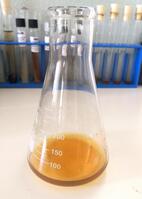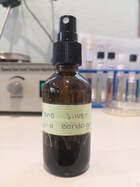2 Comments
Source: https://wellcome.ac.uk/news/what-are-drug-resistant-infections
Drug resistance happens when microbes adapt over time to survive the effects of drugs designed to kill them. The most common type of drug resistance is antibiotic resistance. In this process bacteria – not humans or animals – become resistant to antibiotics. A growing number of common bacterial infections – such as urinary tract infections, gonorrhoea, tuberculosis or pneumonia – have become more dangerous because the antibiotics we have are no longer effective against resistant strains of bacteria. These infections are called ‘drug-resistant infections’ and sometimes the bacteria behind them are called ‘superbugs’. Who is affected by drug-resistant infections?Anyone, anywhere, could be affected. That’s because any infection you could get – including common urinary tract infections – could become resistant to drugs. Across Europe, it is estimated that 25,000 people die each year as a result of hospital-acquired infections caused by five resistant bacteria, including E. coli, K. Pneumoniae and MRSA. In other countries, such as India, tuberculosis (TB) continues to be the most dangerous infectious disease. Worldwide, out of 10 million people with the illness in 2017, over half a million cases were caused by drug-resistant TB. This poses new challenges, especially for children who are much more vulnerable to the disease. Understanding the health burden of drug-resistant infections is challenging because of lack of data and standardised surveillance across different regions and countries. It is possible that many more people are affected than we realise. Why are we seeing more drug-resistant infections? Drug resistance is a natural phenomenon, but its recent growth is largely driven by human activity. Misuse and overuse of antibiotics in humans, animals and plants are accelerating the development and spread of drug-resistant infections. Unnecessarily exposing bacteria to medicines creates more opportunities for drug resistance to develop and spread. Globally, the World Health Organization estimates that only half of antibiotics are used correctly. Antibiotics are used in huge quantities as growth promoters, prophylactics and therapeutic treatments in livestock, fish and crop farming. In some countries, it is thought that 80% of the total consumption of antibiotics is in the animal sector, largely for accelerating growth in healthy animals. In human healthcare too, antibiotics are widely misused. Of the 150 million prescriptions for antibiotics written by doctors in the USA every year, 50 million were not necessary. In OECD countries, 50% of antibiotics prescribed by general practitioners are thought to be inappropriately used – either not needed, or the wrong antibiotic was prescribed. In some countries, regulation on antibiotic use is poorly enforced or doesn’t exist at all. People can buy antibiotics over the counter to treat viral infections, instead of bacterial ones. Although there is an urgent need to limit the inappropriate use of antibiotics, currently more lives are lost because of lack of access to life-saving antibiotics. Globally, almost 6 million people die each year from treatable infectious diseases. Using antibiotics appropriately – and making them available and affordable where they’re needed – are both important for improving health globally, now and in the future. When will drug-resistant infections be a problem?Drug-resistant infections are already a problem. At least 700,000 people die because of drug-resistant infections every year. If we don’t act now, this number is projected to rise to 10 million by 2050. This means that globally more people will die because of drug-resistant infections than cancer. Drug-resistant infections will cause six times more deaths than diarrhoeal diseases, measles and cholera combined. All countries are – and will be increasingly – affected. But the greatest health burden will be in low- and middle-income countries where health systems are not as strong. Drug-resistant infections could also have wider impacts on livelihoods. Resistant infections can put additional burden on vulnerable people living in poverty. And spread of resistant infections in livestock animals could affect availability of meat and dairy products. Source: Society for Healthcare Epidemiology of America
|
AuthorStaff writer ArchivesCategories |



 RSS Feed
RSS Feed